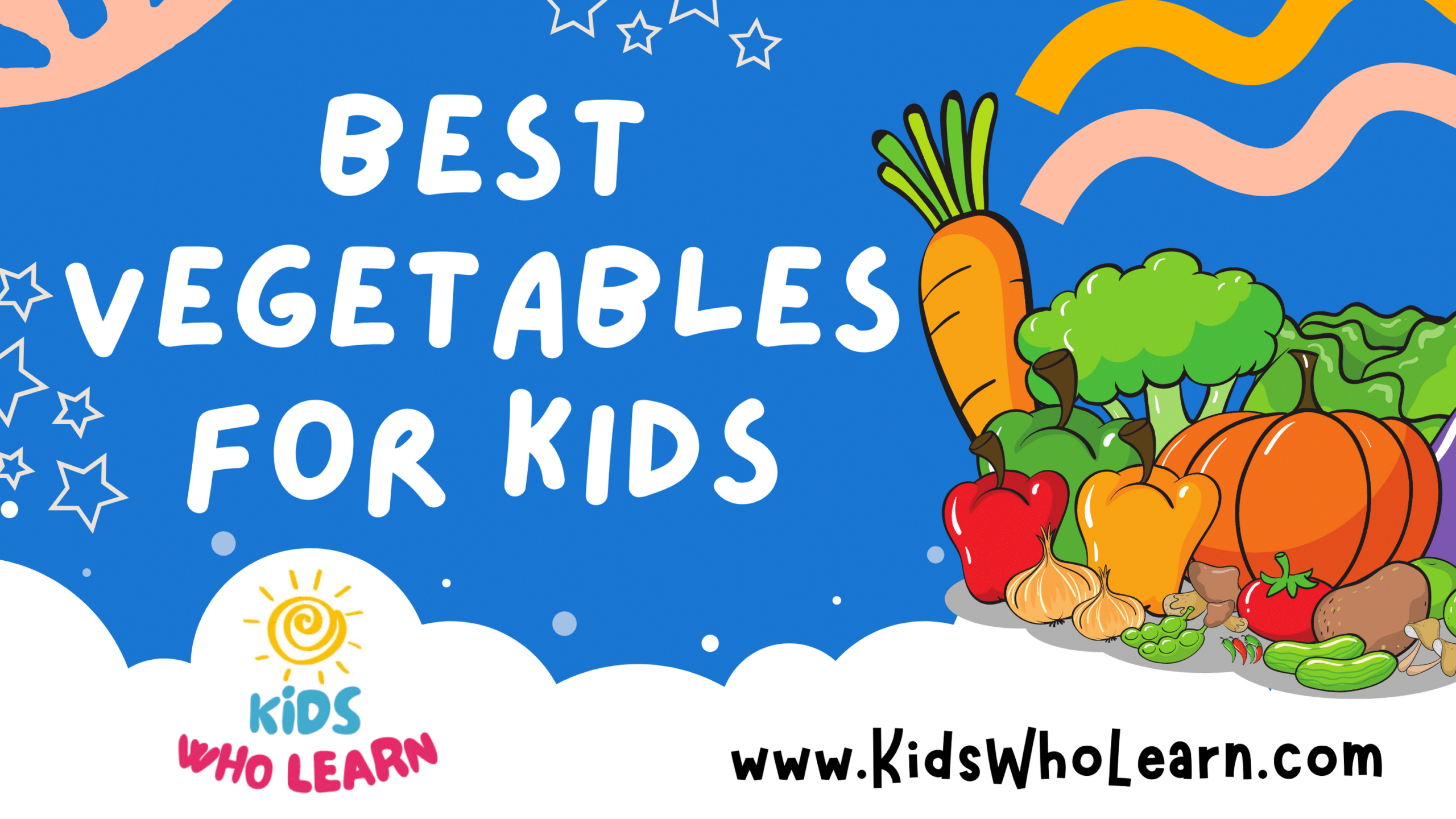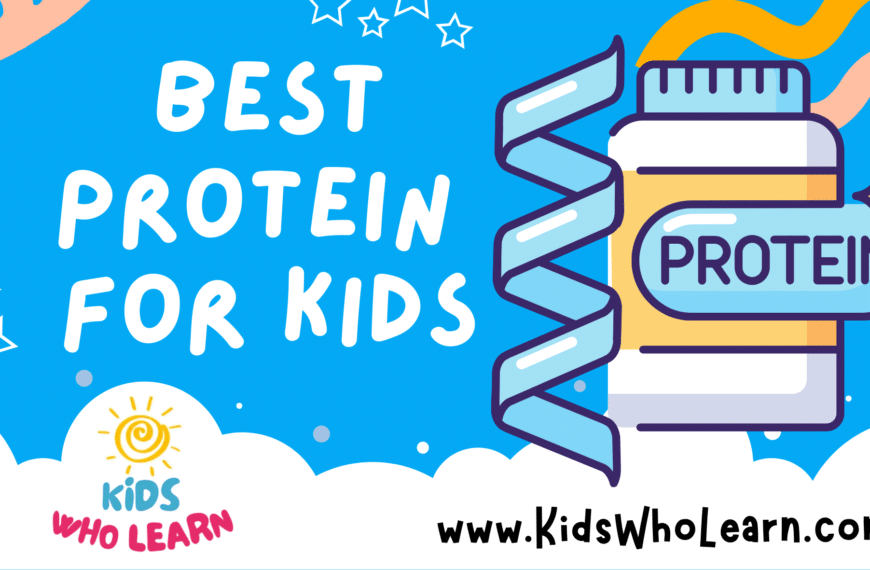Introducing vegetables to a child’s diet is essential for their growth and development. As caregivers, we understand the importance of providing a wide range of nutrients that vegetables can offer. From bolstering the immune system to supporting healthy growth, vegetables are foundational to a well-rounded diet. Ensuring children are receiving an adequate amount of vegetables can sometimes be a challenge, especially with picky eaters, but with the right approach, it can become an integral part of their daily meals.
Knowing which vegetables to prioritize can help simplify meal planning. We recognize certain vegetables standout for their nutrient content, taste, and ease of preparation, making them ideal choices for children. These key veggies include carrots for their beta-carotene, leafy greens for iron and calcium, and sweet potatoes for their fiber and vitamin A content. Exploring various preparation methods can also make them more appealing to young palates.
When it comes to introducing new vegetables, it’s all about consistency and creativity. Patience is key as children may need to try a new vegetable multiple times before accepting it. Including children in the process of shopping, preparation, and cooking can make them more receptive to trying new vegetables. With the right techniques and persistence, even the most vegetable-averse child can begin to enjoy and even look forward to a vibrant array of vegetable dishes.
Key Takeaways
- Vegetables are vital for kids’ development, and offering a variety is important.
- Certain vegetables like carrots, leafy greens, and sweet potatoes are especially beneficial for kids.
- Patience and creativity in preparing and introducing vegetables can help children accept and enjoy them.
Why Vegetables Are Essential for Kids
We understand that vegetables are a cornerstone of a healthy diet, especially for children. They provide a range of nutrients necessary for growth and development. These include vitamins, minerals, and fiber, all essential for keeping kids healthy.
Vegetables are rich in fiber, which is vital for maintaining good digestive health. Childhood is a critical time to establish eating behaviors that lead to lifelong well-being, and vegetables can contribute to a balanced diet that supports normal growth.
Here’s what we know:
- Vitamins and Minerals: Vegetables are packed with crucial vitamins such as A, C, and K, as well as minerals like iron and potassium. These are key for building strong bones and a robust immune system.
- Antioxidants: Kids need antioxidants to protect their bodies from damage caused by free radicals. Vegetables like bell peppers, tomatoes, and leafy greens are excellent sources of antioxidants.
Here is a simple breakdown:
| Nutrient | Function |
|---|---|
| Fiber | Aids in digestion and prevents constipation. |
| Vitamins | Supports the immune system and cell growth. |
| Minerals | Essential for bone health and energy production. |
| Antioxidants | Protects cells from oxidative stress. |
Incorporating an array of colorful vegetables can help ensure that children consume a variety of nutrients. These help not just in physical development, but also cognitive function, and may reduce the risk of chronic diseases later in life. It is our responsibility to guide children towards food choices that set the foundation for a healthy life.
Top Vegetables to Include in Your Child’s Diet
We understand the importance of incorporating a variety of vegetables into your child’s diet to ensure they receive essential vitamins and fiber. Here are some top vegetable picks separated into categories for clarity.
Leafy Greens
Leafy greens like spinach, kale, and romaine lettuce are nutrient powerhouses, packed with vitamins A, C, and K, as well as iron, which are vital for your child’s growth and development. Introducing these in meals as salads or incorporating them into smoothies can be a good way to get children to eat them.
- Spinach: Rich in iron and calcium
- Kale: High in vitamins A, C, and K
Root Vegetables
Root vegetables such as sweet potatoes, carrots, and potatoes are not only versatile and kid-friendly but also a great source of dietary fiber, vitamin A, and potassium.
- Sweet potatoes: Beta-carotene-rich, good for eyesight
- Carrots: Vitamin A for healthy skin and vision
- Potatoes: Contain vitamin C and potassium
Cruciferous Vegetables
Cruciferous vegetables like broccoli, cauliflower, and brussels sprouts offer compounds that may support immune health. They can be steamed, roasted, or finely chopped into rice-like consistency for more appeal to kids.
- Broccoli: Full of vitamins C and K
- Cauliflower: Versatile and can be used as a low-carb alternative
- Brussels sprouts: Contains antioxidants and vitamin K
Squashes and Gourds
Squashes and gourds, including butternut squash, zucchini, and pumpkin, are often well-received by kids due to their mild flavors and can be baked, pureed, or turned into noodles.
- Butternut squash: High in vitamins A and E
- Zucchini: Good source of vitamin C and manganese
- Pumpkin: Contains alpha- and beta-carotene for good vision
Legumes and Pods
Legumes like peas, green beans, and snap peas are excellent for kids since they’re not only fun to eat but also provide protein, iron, and zinc.
- Peas: Rich in vitamins K and C
- Green beans: Contain fiber and vitamin C
- Snap peas: High in vitamin C and a good source of iron
Additional Favorites
Adding a variety of these vegetables can be a part of a child-friendly diet:
- Bell peppers: High in vitamin C and antioxidants
- Corn: Contains B vitamins and magnesium
- Cucumber: Hydrating with vitamin K
- Celery: Provides dietary fiber and vitamin K
- Bell peppers: High vitamin C content
- Cucumber: High water content, refreshing
- Celery: Low in calories and high in fiber
Surprisingly Popular
Some vegetables have a surprising popularity among kids due to their sweetness or texture:
- Cherry tomatoes and grape tomatoes can be fun finger foods offering vitamin C and lycopene.
- Yellow bell peppers are sweeter and contain vitamins A and C.
- Avocado provides healthy fats that are essential for brain development.
- Cherry tomatoes: Sweet, bite-sized, high in vitamin C
- Yellow bell peppers: Milder in flavor, rich in vitamins A and C
- Avocado: Contains monounsaturated fats and vitamin K
Nutrient-Rich Preparations for Picky Eaters
Our children’s health is paramount, and incorporating a variety of vegetables in their diet is key. We’re here to offer you practical and appealing ways to serve vegetables that picky eaters can’t resist.
Creative Cooking Methods
We often find that involving kids in the cooking process and employing creative methods can make vegetables more appealing. For instance:
- Roasting: Try roasting sweet corn or carrots with a drizzle of olive oil to enhance their natural sweetness.
- Steaming: Steamed broccoli retains most of its nutrients and can be more palatable for kids when it’s vibrant and tender.
Integrating Vegetables into Familiar Foods
Vegetables can be seamlessly added to foods that kids already love. This approach ensures they get their nutrients in a familiar taste context:
- Pasta: Incorporate pureed squash into macaroni and cheese for a creamy and nutritious twist.
- Pizza: Top off your pizza with finely chopped mushrooms or kale to add antioxidants without compromising flavor.
Fun Vegetable-Based Snacks
Snacks are an essential part of a child’s diet. Making them fun and vegetable-based can encourage more frequent consumption:
- Ants on a Log: Celery sticks filled with peanut butter and topped with raisins are both nutritious and fun.
- Smoothies: Blend avocado or kale with fruits to create smoothies that are rich in nutrients and taste.
Dips and Dressings to Encourage Eating
Dips can make vegetables more enticing for children. A few healthy and delicious options include:
- Hummus: Packed with protein, hummus is a great complement to raw vegetable sticks.
- Greek Yogurt Dip: Mix Greek yogurt with herbs for a protein-rich dip that pairs well with steamed or raw veggies.
By incorporating these suggestions, we can make meals and snacks both nutritious and enjoyable for our family, even when catering to the pickiest of eaters.
How to Introduce New Vegetables to Kids
Introducing new vegetables to children can be a fun and educational experience for the whole family. We recommend a gradual approach. Start with vegetables that have a milder taste and slowly work up to more diverse flavors. The key is to offer these vegetables in a variety of forms and settings.
- Set an Example: We can show our kids how much we enjoy eating vegetables during family meals.
- Get Them Involved: Bring children into the process by letting them select vegetables during grocery shopping or helping in the garden.
| Age Group | Tips for Introduction |
|---|---|
| Toddlers | Offer bite-sized pieces during snack time to make it more manageable. |
| Young Kids | Let them dip veggies in sauces to add fun to trying new food. |
- Creativity in Preparation: We might cut the vegetables into fun shapes or include them in colorful salads.
- Praise & Encourage: When children try a new vegetable, positive reinforcement is powerful.
- Consistency is Key: We should consistently offer new vegetables, even if kids don’t like them at first. It can take several attempts before they start to enjoy a new food.
Remember, patience and creativity will go a long way in expanding the palate of young kids.
Recipes and Meal Ideas
We understand the importance of incorporating a variety of vegetables into a child’s diet. Our section includes simple and tasty recipes that cover breakfast, lunch, dinner, and snack options, featuring favorites like sweet potatoes and broccoli. Our meal ideas are designed to appeal to young kids and the whole family, focusing on nutrition and flavor.
Breakfast Options
- Sweet Potato and Spinach Frittata:
Prepare a wholesome frittata with whisked eggs, diced sweet potatoes, spinach, and a sprinkle of cheese. Bake until the eggs are set and serve warm. - Berry Vegetable Smoothie:
Blend spinach, frozen berries, a banana, and a splash of orange juice for a fiber-packed breakfast smoothie.
Lunch Preparations
- Veggie Macaroni and Cheese:
Create a classic mac and cheese, but for an extra nutritional punch, add pureed butternut squash or carrots into the sauce. - Crispy Veggie Quesadillas:
Fill whole-wheat tortillas with a mix of sautéed bell peppers, corn, zucchini, and shredded cheese. Cook until golden and crispy.
Dinner Favorites
- Roasted Vegetable Pizza:
Top a whole-grain pizza base with tomato sauce, roasted sweet potatoes, bell peppers, broccoli, and mozzarella. Bake until the cheese is bubbly. - Chicken and Veggie Risotto:
Stir-fry cubes of chicken and a medley of peas, carrots, and zucchini before mixing into a creamy risotto and finishing with a touch of parmesan.
Healthy Snacks and Sides
- Cucumber and Hummus Plate:
Slice cucumbers into sticks and serve with a side of hummus for a crunchy, protein-rich snack. - Fruit and Veggie Muffins:
Bake muffins with grated carrots, zucchini, and apple for a fiber-rich snack that’s subtly sweet and perfect for snack time.
Through these recipes, we strive to offer a well-rounded approach to introducing vegetables into every meal, ensuring kids enjoy a balanced diet with plenty of flavors.
Tips for Grocery Shopping with Kids
When we involve kids in the grocery shopping process, it transforms the chore into an educational experience. First, we make sure to create a shopping list together, focusing on selecting vegetables that are both nutritious and appealing to children. Sweet potatoes and carrots are favorites due to their natural sweetness. We also choose spinach and cucumbers for their mild flavors and lettuce for simple salads that kids can help prepare.
Our list often includes vegetables with a crunchy texture, which kids love. Bell peppers in various colors, sweet corn, and snap peas can be appealing snack options. We don’t forget to add grape and cherry tomatoes for a fun-sized treat that can easily be incorporated into vegetable recipes.
When shopping, we keep an eye out for:
- Sweet Potatoes: Rich in vitamins and naturally sweet.
- Carrots: Perfect for snacking or adding to meals.
- Spinach & Lettuce: Great for salads and sandwiches.
- Cucumbers: Hydrating and good with dips.
- Bell Peppers: Colorful and crunchy.
- Cherry/Grape Tomatoes: Liked by kids for their size and flavor.
- Sweet Corn: A kid-friendly vegetable that can be eaten right off the cob.
- Crunchy Veggies: Adds texture to meals.
- Mild Flavors: Easier for kids to enjoy regularly.
Lastly, for fun, we include one ‘wild card’ vegetable on our list, like mushrooms or an unfamiliar green, to explore together. Peanut butter is another pantry essential, perfect for pairing with vegetables as a tasty dip. Together, we make grocery shopping an engaging activity that encourages our kids to enjoy the vast world of vegetables.
Nutritional Guidelines for Children
Children require a balanced diet rich in nutrients to support their rapid growth and development. We aim to incorporate a variety of vegetables into their diet as they are excellent sources of vitamins, minerals, fiber, and other essential nutrients.
Vegetables and Cooking Methods
- Steamed Vegetables: Retain most nutrients, ideal for preserving the vitamin content.
- Roasted Vegetables: Enhance flavor, making them more appealing to kids.
Protein and Dairy Pairings
- Greek Yogurt: A healthy source of protein and calcium.
- Cheese: Contains protein and calcium; can be served with vegetables.
Healthy Fats
- Olive Oil: Offers a dose of healthy fats when used in cooking or as a dressing.
Snack Ideas
- Raisins: A sweet treat providing fiber and iron.
- Vegetable Sticks and Dip: Make raw vegetables fun with a side of Greek yogurt dip.
We recommend that families ensure children eat a rainbow of vegetables to cover a broad spectrum of nutrients. This practice supports overall health and introduces kids to a wide range of flavors. Here’s a simple table summarizing key nutrients found in various vegetables:
| Vegetable | Nutrients |
|---|---|
| Carrots | Vitamin A, Fiber |
| Spinach | Iron, Magnesium, Vitamins A, C, and K |
| Broccoli | Vitamin C, Calcium, Fiber |
| Peas | Protein, Vitamin K, Manganese |
By creating positive eating habits involving vegetables, we contribute to our children’s long-term health. It’s our role to serve them nutrient-dense foods that support their growing bodies and aid in the development of healthy eating patterns for life.
Maintaining a Balanced Diet
We recognize the importance of incorporating a variety of foods into our family’s meals and snacks to ensure a balanced diet for our children. A well-rounded meal for kids includes a mix of fruits, vegetables, grains, protein, and dairy, tailored to their age and nutritional needs.
For babies beginning on solids, pureed vegetables and fruits provide essential vitamins and minerals. As they grow, toddlers can enjoy these foods in bite-sized pieces as finger foods.
Young kids can be picky eaters, but we can make mealtime fun and introduce new flavors gradually. Offering a colorful plate with a mix of the following can help:
| Food Group | Examples |
|---|---|
| Vegetables | Carrots, broccoli, sweet potatoes |
| Fruits | Apple slices, berries, bananas |
| Grains | Whole grain bread, rice, pasta |
| Protein | Chicken, beans, eggs |
| Dairy | Cheese slices, yogurt, milk |
While kids may crave sweets or fast food like pizza, these should be occasional treats rather than staples. We can create healthier versions at home, such as pizzas with whole wheat crusts and plenty of veggies.
Involving kids in meal planning and preparation can encourage them to try new foods and understand the components of a healthy diet. By maintaining this balance, we contribute to their overall health and development, creating a solid foundation for lifelong eating habits.
Encouraging Healthy Eating Habits
We know how vital it is to instill good eating habits in children from a young age. It’s our responsibility to ensure that our kids, including toddlers and young children, see vegetables not only as a healthy choice but as a delicious part of their meals and snack times.
When we make vegetables a regular part of family meals, we send a clear message about their importance. We can lead by example, showing enthusiasm when we eat our greens. Kids are more inclined to eat what they see us enjoying.
Here’s a quick guide to encourage healthy eating in picky eaters:
- Make It Fun: Create playful shapes with vegetables or serve them with a favorite dip to make them more appealing during snack times.
- Involve Them: Let kids help in choosing vegetables at the store and involve them in preparing meals. This gives them a sense of ownership.
- Variety is Key: Introduce a colorful array of vegetables to pique their curiosity and cover various nutrients.
- Healthy Alternates: Replace ingredients in favorite dishes, like pizza, with vegetables to increase their fiber intake without sacrificing taste.
| Age Group | Ideas for Vegetable Introduction |
|---|---|
| Toddlers | Small, bite-sized veggies with dip |
| Young Kids | Veggies in fun shapes, mixed into pasta |
| Older Children | Salad bars, vegetable toppings on pizza |
We steer clear of promises that eating vegetables will turn them into superheroes overnight. Instead, we focus on constant exposure and reinforcement of the health benefits in ways they can understand.
By quietly integrating vegetables into snacks and meals, and keeping our approach positive and persistent, we’ll set the foundation for a lifetime of healthy eating habits for our children.
Frequently Asked Questions
We understand the importance of nutrition for young ones and have compiled a list of common questions to help guardians make informed decisions about the vegetables they feed their children.
Which vegetables are most beneficial for a child’s growth?
Leafy greens like spinach and kale are rich in iron and calcium, which are essential for a child’s growth. Carrots and sweet potatoes, packed with vitamin A, promote healthy vision and immune function.
What are some kid-friendly vegetables that are suitable for snacking?
Carrot sticks, cucumber slices, and cherry tomatoes are great for snacking. They’re not only crunchy and hydrating but also easy for kids to eat on their own.
How can you incorporate vegetables into meals for picky toddlers?
We suggest blending vegetables into sauces, such as a spinach-infused tomato sauce, or sneak grated zucchini and carrots into patties or meatballs which make them hardly noticeable but still nutritious.
What are the top nutrient-dense vegetables recommended for toddlers?
Broccoli and peas are highly recommended for toddlers due to their high content of vitamins C and K, fiber, and protein. They can support overall health and development.
What are some creative ways to prepare vegetables for children who dislike them?
Try presenting vegetables in fun shapes using cookie cutters, or make colorful vegetable-based smoothies and popsicles. This approach often makes vegetables more appealing to children.
At what age can babies start eating solid vegetables, and which ones are best?
Babies can generally start eating pureed or mashed vegetables at around 6 months. Start with mild-tasting vegetables like pumpkin and carrots before gradually introducing a wider variety.












